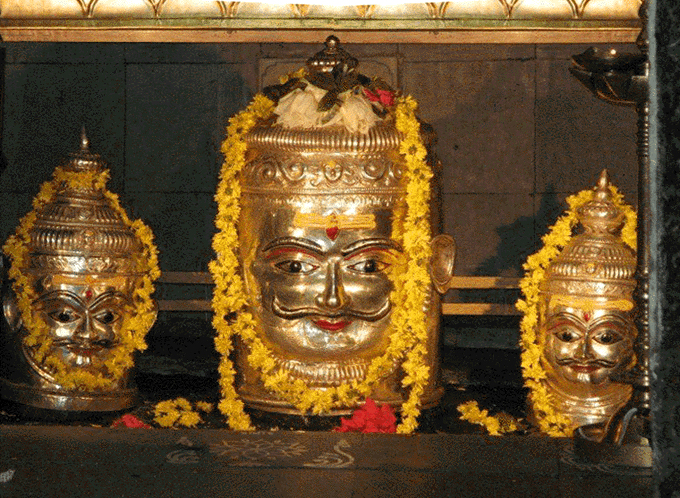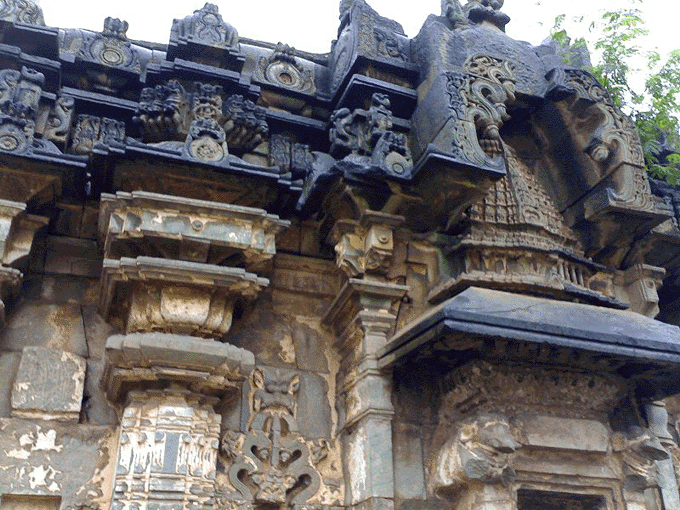
|
|
|
|
Gadag's most prominent temple is the large Trikuteshwara (Trikut Eshwara), which was designed by the famous Jakanachari and built by the Kalyani Chalukyas. During their rule, some 50 temples were built in the region. Sometime after the temple was originally built, Trikuteshwara was expanded by the Chalukyas into a vast complex. At that time the temple had triple shrines, which some unconfirmed references indicate housed Brahma, Shiva, and Surya.

Trikuteshwara Temple Entrance Located in the southern part of Gadag village, Trikuteshwara Temple is presently known to be dedicated to Lord Shiva. However, given that Saraswati Devi's shrine adjoins the main temple, and given the antiquity of the original Sataswati deity, it seems likely that the original temple was dedicated to Lord Brahma. The current presiding Deities here are tri-linga of Visnu, Brahma and Shiva. The three lingams, which reside in the east-facing sanctum sanctorum, are mounted on a single stone, similar to the Deities at Trimbakeswar Temple, which we recently visited.

Saraswathi Temple Adjoining the Trikuteshwara temple is a Saraswathi shrine, to the south, and the two share a common hall. The Saraswathi temple is beautifully carved, with shining pillars and a porch with impressive carvings. The original deity of Saraswathi Devi became damaged by age and rascals, and a newly carved murti has now been installed in an adjacent shrine. There is also a murti of Adi Shankaracarya here.
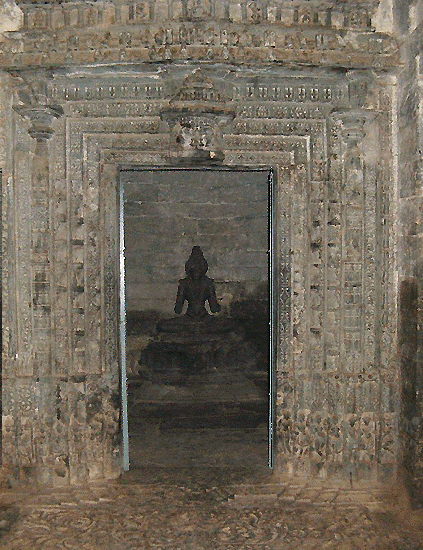
Original Saraswathi Deity Inside the main Trikuteshwara temple, inclined slabs serve as balcony seats, and these are decorated with ornately carved figures, overhung by steeply angled eaves. Inside the hall, the columns have figures arranged in shallow niches.
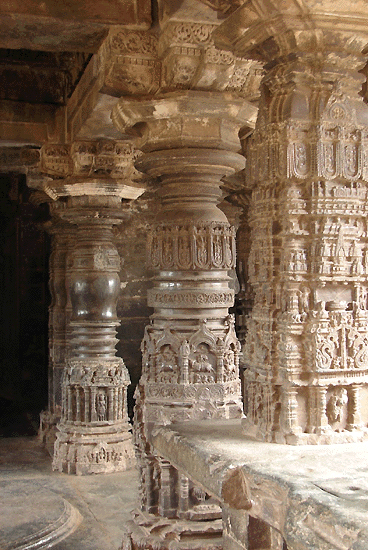
Saraswathi Temple Columns Overall, the temple is in quite good repair, the slanting roof and imposing construction make it a very pleasing monument to view. In the back of the temple complex is a tank, called Rudra Theertha, along with a well.
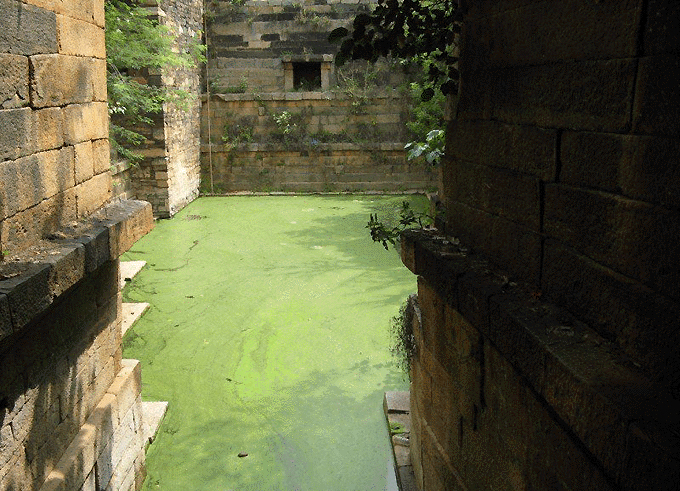
Rudra Theertha
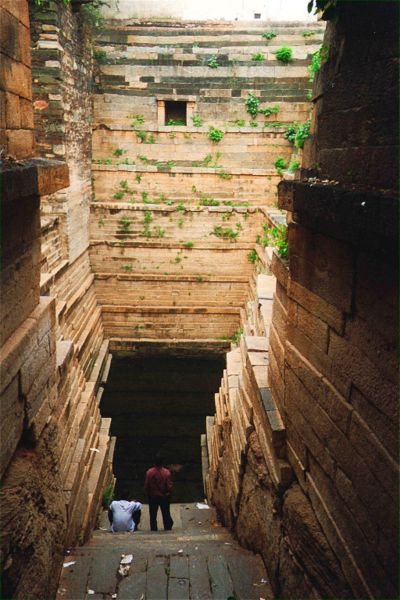
Temple Well A number of late Chalukya monuments (11th-12th centuries) in the city indicate its historic past. These include a temple dedicated to the three Devis – Saraswathi, Gayatri and Sharada – a Veera Narayana temple, and a Rameshwara Temple. In the middle of the city stands the Someshvara Temple which, although now abandoned to ruins, has intricate carvings that are quite well preserved. The great Kannada poet, Kumaravyasa, composed his famous 'Kannada Bharatha' in the Veeranarayana temple. 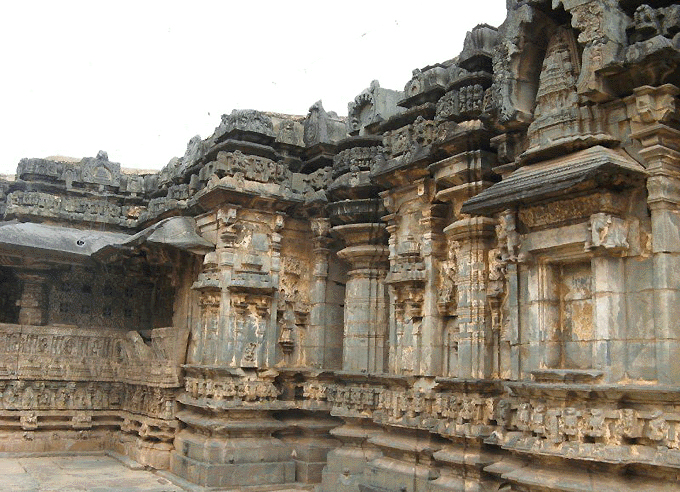
Trikuteshwara Temple
| |
